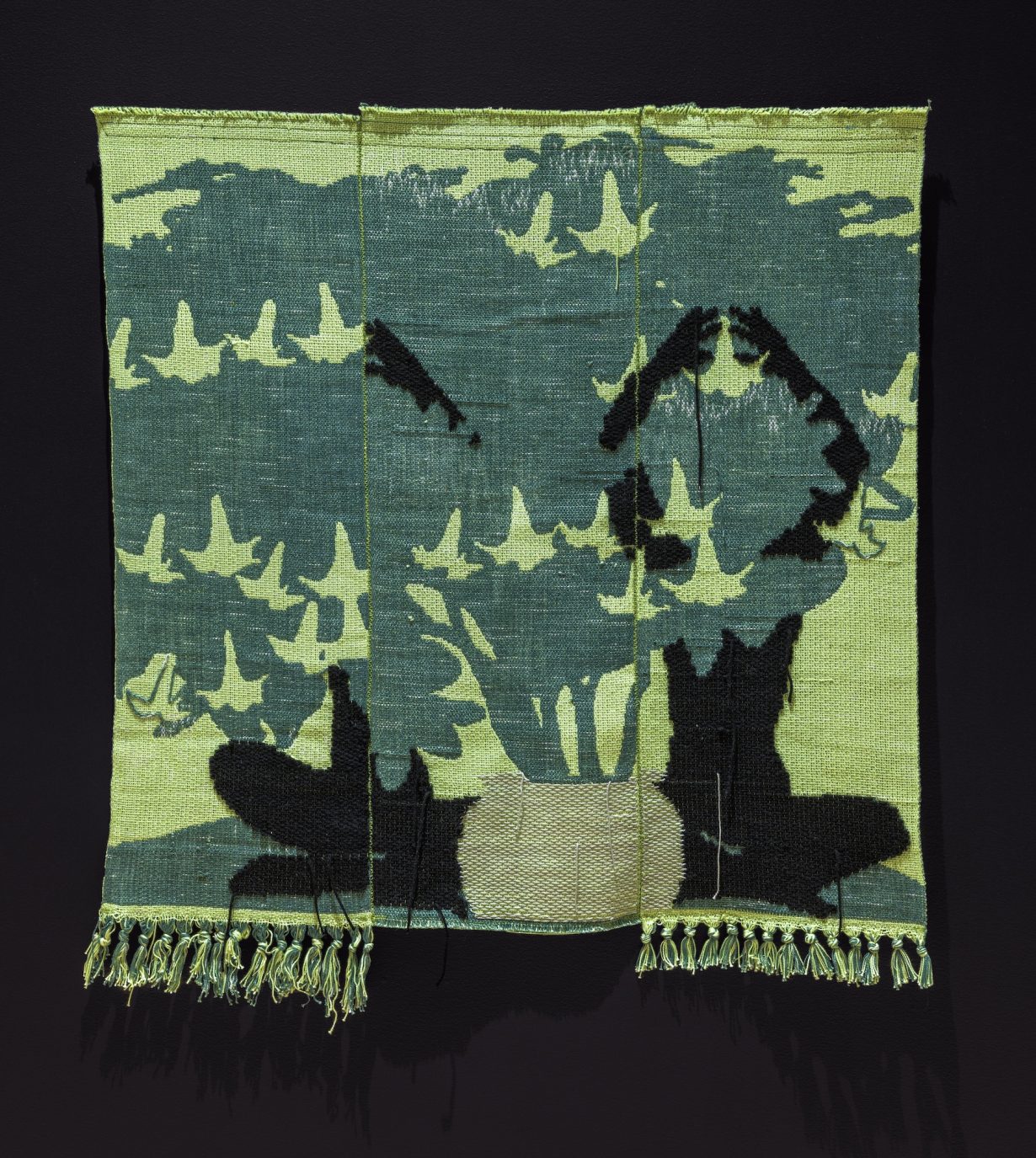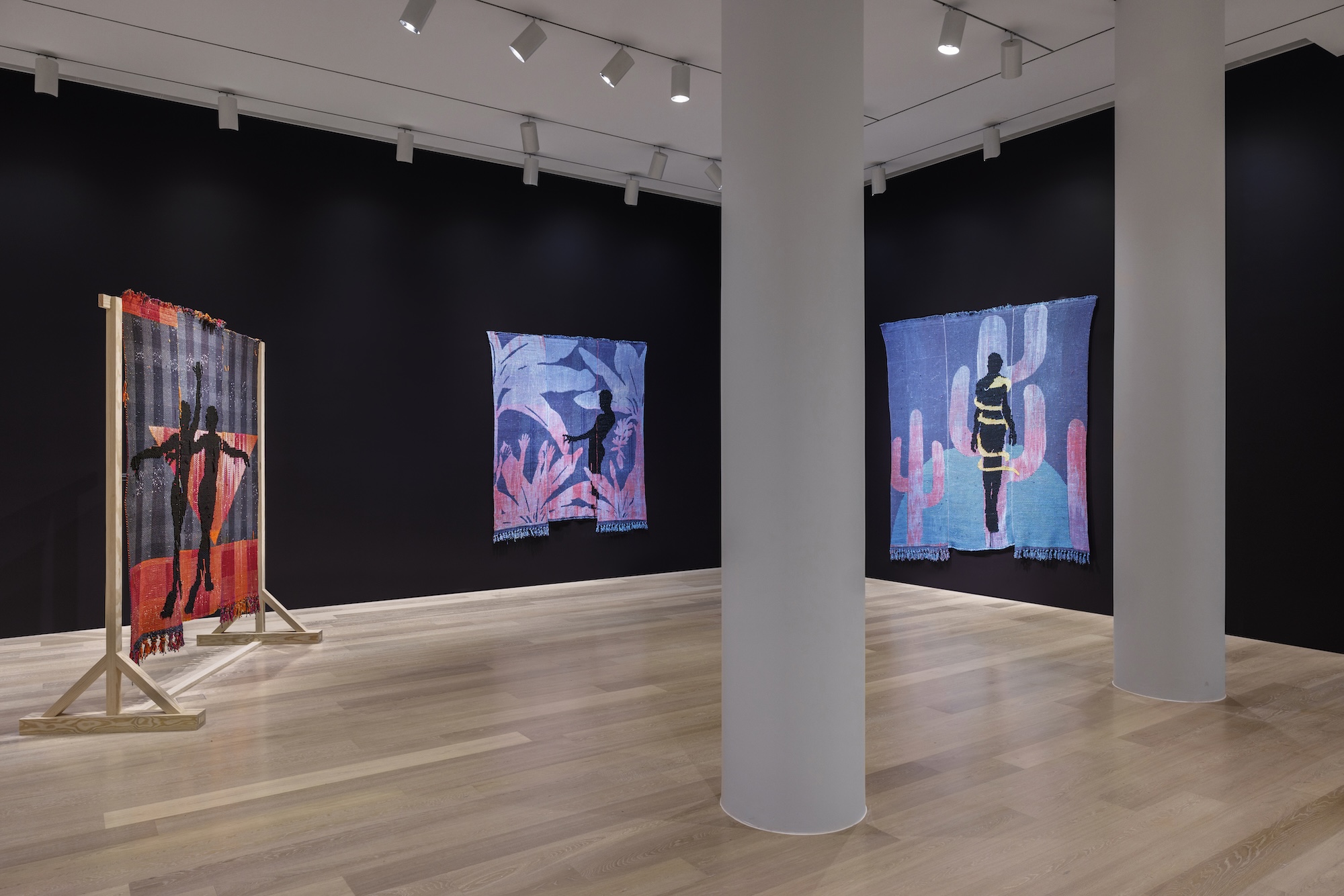In homage to Audre Lorde, the artist’s exhibition at SCAD Museum of Art explores whether subsistence itself can be a form of resistance
Texas-born, Los Angeles-based artist Diedrick Brackens is known for largescale weavings that incorporate myth and storytelling to highlight Black and queer histories and bodies, particularly in relation to the American South. the shape of survival, a show featuring ten weavings, is named as an homage to the late Black feminist thinker and activist Audre Lorde’s writing, much of which explored the idea of survival in the face of racism, sexism and violence. In this show Brackens addresses his signature subject matter while giving shape to Lorde’s suggestion that subsistence itself can be a form of resistance, especially with the support of community.
Suspended in the middle of the gallery, lined by temporary white columns on either side evoking the grand entrances of plantation houses, is birth of humility (2024). This large three-panel cotton and acrylic weaving in pink, blue and purple shows two lithe, androgynous figures facing each other while arching backwards, their arms conjoined. Ten silhouetted pigs make up the background, perhaps a nod to livestock farming, a means of survival for many communities in the American South historically and today. Elsewhere, a pond, a promise, a prayer (2025) is woven in similar hues. Here, a lone figure floats in water, their head just above the surface, with six catfish swimming around them. (Common in the American South, and adapted to survive in many different types of water and environments, the catfish is often used to represent the idea of resilience in the face of adversity.) Nearby is the brothers (2025), showing a figure affixed to a cactus and encircled by a snake; the visual references to crucifixion and the Rod of Asclepius – a serpent-entwined rod wielded by the titular Greek god, who is associated with healing and medicine – are undeniable. Conceptually, each of these works alludes to the notion that survival doesn’t come without community: without their partners the two entwined figures would fall. Without catfish supporting it, the figure in water might drown. Without the protection of the snake, the figure on the cactus might be hung out to die.

The figures, most of whom are woven in black thread, can be seen as representing Black bodies or shadows, the visual rendering of an inner self that can be universally recognised. In works like shadows spell my name and undergrowth, understory (both 2025), figures appear to be searching for something in watery landscapes, evoking accounts of swamps in states like Louisiana, Virginia and North Carolina as both refuges for enslaved people attempting to escape north and sites of queer cruising. In shadows… four figures holding lanterns are interconnected by a halo of light, their bodies united by the glow of their lanterns. In undergrowth… one figure seems to be trying to connect with those barely seen: standing among ferns and banana trees, they stretch out their hand, while leaves near their feet morph into ghostly hands reaching upwards.
The backs of some of Brackens’s weavings, visible on those hung on armatures, reveal experimental layers infused with patterns and colours, not unlike an underpainting. Threads of different widths and transparencies create a sense of depth and movement. Rough textures, deliberately fraying edges and loose threads hearken back to Lorde’s idea of subsistence, which, Brackens’s work seems to suggest, is always possible with the support of others.
the shape of survival at SCAD Museum of Art, Savannah, through 7 July
From the May 2025 issue of ArtReview – get your copy.
